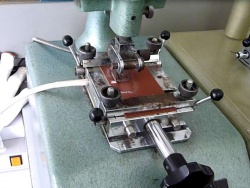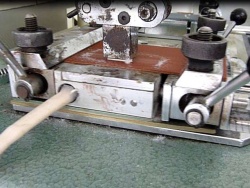Rub fastness of leather
Rub fastness - Rubbing fastness
The rub fastness is tested as follows: A white felt (woolen felt) loaded with a weight is rubbed several times over a stretched leather surface. Then the leather and the felt are checked for changes. The felt is tested to see if paint has been rubbed off the leather. The colour difference is compared with the grey scale. The leather is tested to see whether there has been visible damage or changes on the leather surface.
The felt can be used dry, soaked in water or with a welding solution. Depending on the type of leather, the repetition rates of the rub-movement are different.
The number of repetition cycles determines the "rub fastness". Depending on the manufacturer, the automotive industry requires e.g. between 300 and 1000 "wet in wet" cycles without changes on car leather. In this case, a wet felt is tested on a pre-moistened leather. The furniture manufacturers are not so strict and require less repetitions.
The best known is the VESLIC test device or VESLIC rub-fastness device. Often, it's spoken of the "veslic test" when the test of rubbing fastness is meant.
The rub fastness test is one of the most typical tests for the quality of leather.
Test of rubbing fastness.
Additional information










 a kotori web solution
a kotori web solution